How to Identify a Genuine Langhao (Wolf Hair/Weasel Hair) Brush
Many calligraphy enthusiasts want to purchase wolf hair brushes (lang hao) but don’t know how to distinguish between genuine and fake ones. This is likely a common concern for many calligraphy students. In today’s article, I will share my personal expertise on how to identify a genuine Langhao (Wolf Hair/Weasel Hair) brush, hoping to provide some guidance for those struggling with this common problem.
To identify a genuine Langhao (Wolf Hair/Weasel Hair) brush, you need to understand the truth about “wolf hair” brushes.
When teaching Chinese calligraphy, I often introduce students to the basic knowledge of the Four Treasures of the Study (brush, ink, paper, and inkstone). When discussing wolf hair brushes, students frequently ask whether they’re actually made from gray wolf fur. I believe many beginners share this question. In reality, gray wolf hair is too coarse for brush-making. The “wolf” in wolf hair brushes actually refers to the yellow weasel (Mustela sibirica/Weasel), specifically the hair from its tail.

Genuine Langhao brush
Characteristics of Genuine Wolf Hair
Unlike sheep hair brushes made from southern mountain goat hair, the finest yellow weasel tails come from Northeast China, known as “Northern Wolf Hair(北尾)” or “Guandong Liao Tail(关东辽尾).” Wolf hair brushes are more rigid and resilient than sheep hair brushes, making them suitable for both calligraphy and painting, though they’re less durable. They’re also more expensive than sheep hair brushes.
In recent years, due to deteriorating ecological environments, wild yellow weasels have become increasingly scarce. Combined with climate warming, the quality of available hair material has declined. Brush material that is both long and has a fine tip has become extremely rare, which is why genuine pure wolf hair brushes are quite expensive.
The longest wolf tail hair I’ve seen measures 6 centimeters (including 1 centimeter inside the brush handle), sourced from Northeast China (near Russia), and is exceptionally expensive. Common wolf hair brushes typically measure between 4-5 centimeters (even these are quite costly).
Market Situation
Due to market demand, both physical stores and online shops are flooded with various fake wolf hair brushes, including:
- Genuine wolf hair mixed with nylon
- Completely synthetic hair (nylon) dyed to appear authentic, or other animal hair made into entirely fake wolf hair brushes
- Brushes using yellow horse hair or yellow cattle hair as the outer layer
- Brushes with goat hair dyed yellow to create the brush head, appearing yellowish-brown or reddish-brown on the surface, with paler or slightly grayish color at the base
Genuine wolf hair brushes have a tender yellow or slightly reddish-yellow surface with a natural luster. Upon close inspection, each hair stands upright and firm. The middle section is thick while the root is slightly thinner. When the tip of a high-quality wolf hair brush is moistened and pinched flat, you can see the transparent tip glowing a light yellow color.
How to Identify a Genuine Langhao (Wolf Hair/Weasel Hair) Brush
1. Check the Length
Based on the length alone, you can get a good idea of how to identify a genuine Langhao (Wolf Hair/Weasel Hair) brush. Wolf hair is not very long, typically under 5 centimeters. About 90% of brushes that exceed 5 centimeters are fake. While there are extremely rare exceptions that can reach around 6 centimeters, these brushes are usually very expensive and difficult to find. Most longer brushes are actually mixed-hair, combining different materials.
2. Consider the Price
Regular small-script wolf hair brushes (referring specifically to brushes with tips under 2.5 centimeters) typically sell for over 45-50 yuan each in the market. If priced below this threshold, there’s a high probability the brush contains other materials. Of course, some people prefer these mixtures of sheep hair or synthetic hair, which is a different matter. (Editor’s note: If you’re interested in brushes made from other materials like sheep hair or purple hair, you might want to read my other article “Top 10 Chinese Calligraphy Brushes: The Ultimate Guide to Selection and Care“)
3. Smell Test
When you get a wolf hair brush, hold it under your nose. Some untreated pure wolf hair brushes have a dog-like smell. Fake wolf hair brushes often have a chemical dye smell due to manufacturing processes, or a distinctive sheep odor if mixed with sheep hair.
4. Examine the Color
Pure wolf hair brush heads have a lighter color with natural luster, with a gradient from light at the root to darker at the tip.

Comparison of genuine and imitation wolf hair brushes
However, one type is particularly difficult to distinguish: brushes with genuine wolf hair used as the outer layer, while the interior is made of dyed sheep hair, dyed pig bristles, synthetic hair, or other materials. These brushes can only be identified through seller honesty and buyer expertise (and can only be fully recognized after the brush has been broken in). Reputable online stores generally provide photos of wolf hair brushes after they’ve been broken in. For example, all brushes sold in my shop—Qiming Study—include images of the brushes after breaking in.

Wolf hair brushes after they’ve been broken in

Wolf hair of this length is more expensive
5. Feel the Texture
Genuine wolf hair feels like stroking a healthy, well-groomed pet cat with bright and smooth fur—very comfortable to touch. Fake wolf hair feels somewhat rougher.
6. Writing Experience
When writing with a genuine wolf hair brush, the force is evenly distributed without bristle dispersal. The pressure feels gentle, and the entire brush head works as an integrated unit, similar to wielding a flexible sword. Fake wolf hair brushes typically have a small tip and large belly, feeling like two separate parts. Writing with heavy or light pressure produces completely different results—using just the tip feels weak and powerless, while using the belly feels coarse and difficult to control.
Based on what we’ve covered, you should now be able to better understand how to identify a genuine Langhao (Wolf Hair/Weasel Hair) brush and choose the right tool for your calligraphy practice.



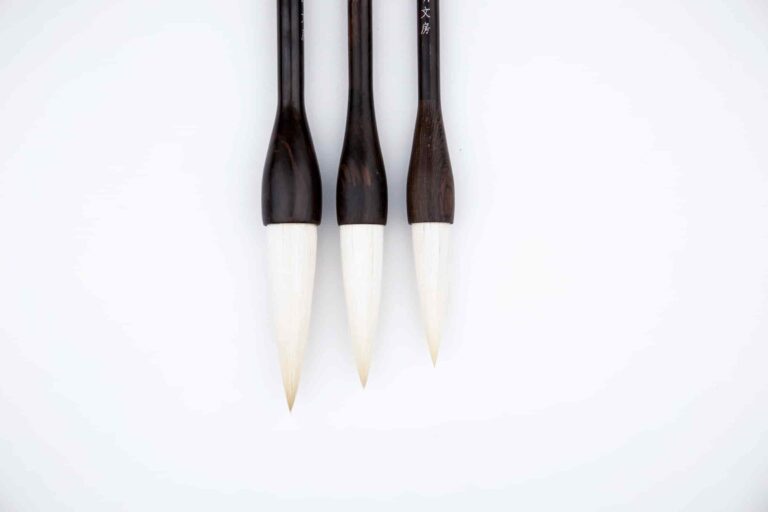
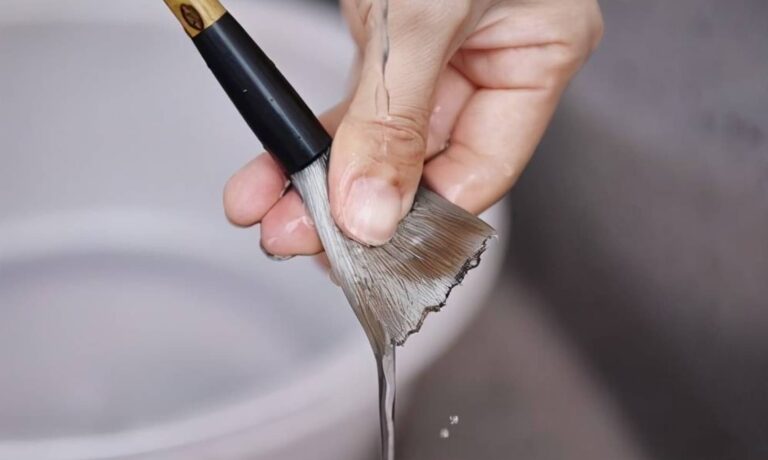
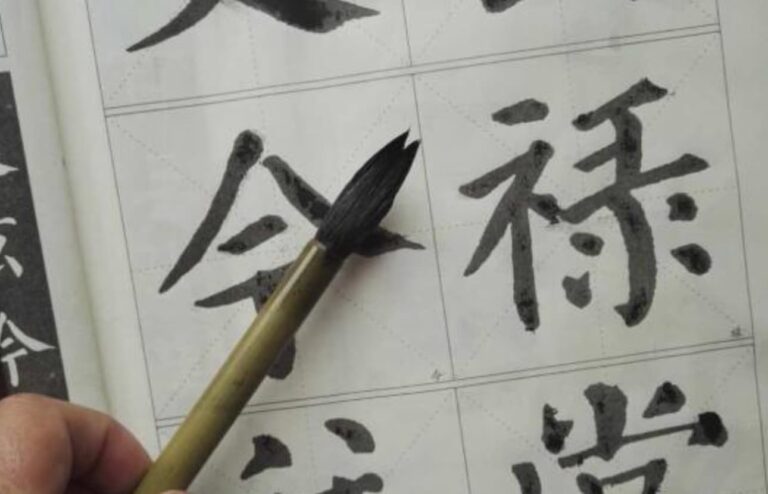
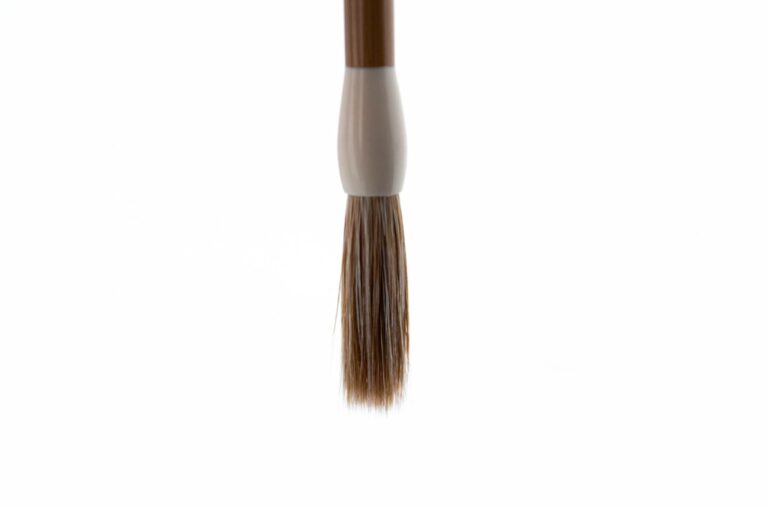
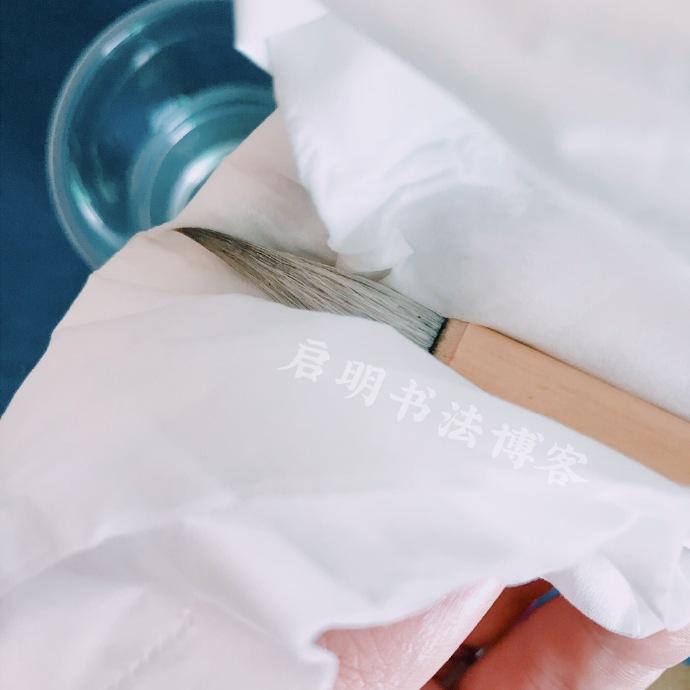
There is obviously a bunch to identify about this. I think you made various nice points in features also.
Thank you for your message. You’re welcome to come back.
There’s noticeably a bundle to find out about this. I assume you made certain nice points in options also.
**Thank you for enjoying my article. You also like Chinese calligraphy, don’t you?**
Thanks a lot for sharing this with all of us you really know what you’re talking about! Bookmarked. Please also visit my website =). We could have a link exchange contract between us!
Thank you. If you would like to exchange links with me, please send me an email. My email address is lqkimilau@gmail.com
Do you have a spam problem on this website; I also am a blogger, and I was wondering your situation; many of us have created some nice practices and we are looking to swap solutions with others, be sure to shoot me an e-mail if interested.
Currently, there isn’t the problem you mentioned. Thank you.
so much excellent information on here, : D.
Yes, I specialize in sharing common knowledge about Chinese calligraphy and the Four Treasures of the Study.
This web site is known as a walk-via for all of the data you wanted about this and didn’t know who to ask. Glimpse here, and you’ll definitely discover it.
So you’re a fan of Chinese calligraphy too, aren’t you?
I wanted to send you the very little remark just to give thanks over again with your exceptional ideas you have featured above. It is really particularly generous of you in giving freely what a lot of folks would have advertised for an electronic book to end up making some cash for themselves, even more so considering the fact that you could possibly have done it if you desired. The solutions in addition served to be the easy way to be sure that many people have a similar zeal really like my own to see somewhat more in respect of this matter. I am certain there are many more enjoyable sessions ahead for individuals that examine your blog post.
Thank you so much for your incredibly kind words! It means a lot to me that you found the content so valuable. I’m happy to share what I’ve learned, and I’m thrilled to know it’s helping others.
I gotta favorite this site it seems very helpful invaluable
Thank you, you are also interested in Chinese calligraphy, aren’t you?
Hey! I know this is kinda off topic nevertheless I’d figured I’d ask. Would you be interested in trading links or maybe guest authoring a blog article or vice-versa? My site addresses a lot of the same topics as yours and I believe we could greatly benefit from each other. If you happen to be interested feel free to send me an e-mail. I look forward to hearing from you! Great blog by the way!
Thank you. Please feel free to email me at lqkimilau@gmail.com.